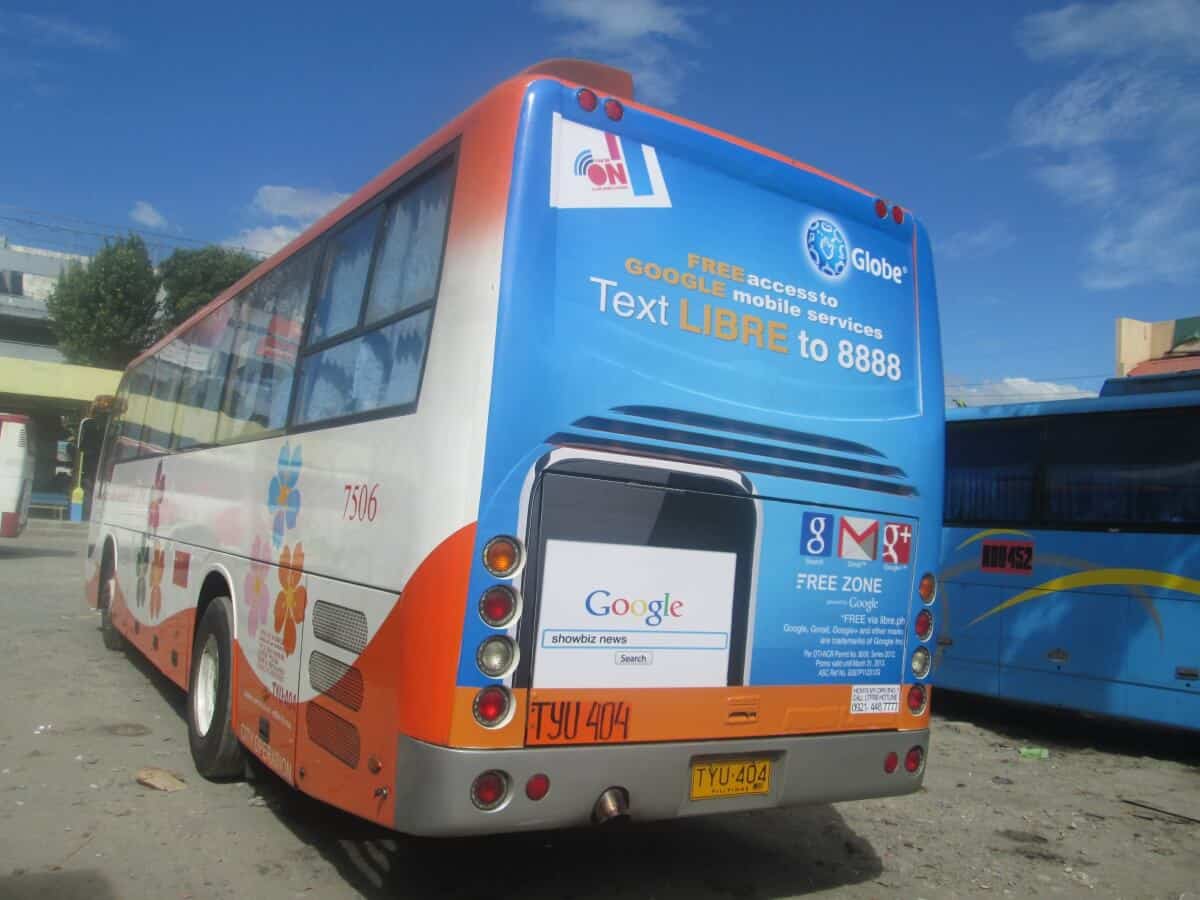Enhance Brand Name Get To with Transit Advertising Philippines
Wiki Article
Understanding the Function of Transportation Advertising in Enhancing Brand Name Presence and Consumer Engagement
Transportation advertising has arised as a critical component in the advertising and marketing landscape, offering special opportunities for brand names to elevate their exposure and involve consumers properly. With the capability to get to a restricted and varied audience throughout their daily commutes, these advertising approaches are not merely regarding presence; they have to do with creating significant connections with prospective clients. As we check out the complex advantages and innovative methods within transportation advertising and marketing, it ends up being crucial to consider just how these elements jointly influence customer perception and behavior, questioning concerning their long-term impact on brand name commitment.Interpretation of Transportation Marketing
Transportation advertising refers to the practice of promoting products, solutions, or brands via ads positioned in and around public transport systems. This type of advertising and marketing includes a variety of positionings, consisting of posters on buses and trains, electronic displays at transit terminals, and wraps on the outside of vehicles. It aims to reach a varied target market, taking advantage of the high foot website traffic connected with public transit.Transit advertising is purposefully placed to record the attention of commuters, that typically spend considerable time waiting or traveling. By incorporating ads into the daily regimens of individuals, brand names can produce a lasting impact and foster brand name recognition. The tool is specifically effective in metropolitan environments, where public transport is a main setting of travel.
Furthermore, transit advertising and marketing can help with local targeting, allowing services to reach certain demographics based on transit routes and terminal places. As metropolitan populaces grow and using public transport boosts, this advertising and marketing technique has actually gotten prominence as a crucial component of integrated advertising and marketing strategies. The dynamic nature of transportation advertising and marketing, integrated with its capacity to engage consumers in a restricted setting, underscores its relevance in modern advertising methods.
Advantages of Transportation Advertising
The efficiency of transit marketing depends on its capacity to deliver a wide variety of advantages to brand names seeking to boost presence and engagement. One of the primary advantages is the substantial reach it supplies; transportation ads can efficiently target varied demographics across city areas, getting to both travelers and pedestrians alike. This wide exposure dramatically boosts brand understanding.One more benefit is the high frequency of perceptions. As transit vehicles travel along recognized paths and stop at multiple locations, they create repetitive direct exposure that enhances brand name messages. This frequency promotes familiarity, which is important in consumer decision-making.
Transit advertising and marketing is also cost-effective contrasted to various other media systems. Given its expansive reach and potential for high impressions, brands commonly experience a lower expense per thousand perceptions (CPM), maximizing their advertising budget.
In addition, transit advertisements can produce a feeling of area link. By lining up with local transportation systems, brands can resonate with local target markets and promote a sense of regional pride. This local method enhances brand loyalty and involvement, making transportation marketing a compelling selection for services aiming to solidify their presence in the market.

Reliable Strategies for Transit Campaigns
To optimize the influence of transit projects, brands need to take advantage of strategic planning and implementation customized to their target audience. First, identifying the market attributes of the target market utilizing public transportation is vital. This allows brands to develop customized messaging that reverberates with potential consumers.Following, choosing the appropriate transit tools is this essential. Whether using bus covers, subway posters, or digital screens, each medium has one-of-a-kind advantages that can improve presence. For instance, lively visuals on bus covers can stand out, while electronic ads can be updated often to mirror timely promotions.
Additionally, integrating a cohesive branding method throughout transportation platforms guarantees uniformity and reinforces the brand name's identity. Using remarkable taglines and eye-catching designs will enhance brand name recall amongst travelers.
Lastly, timing is a key element in implementing successful transportation campaigns. Introducing projects during height traveling hours or neighborhood occasions can dramatically raise visibility and engagement. By employing these strategies, brands can successfully harness the capacity of transit marketing, promoting higher awareness and connection with their target market. Inevitably, a well-executed transportation campaign can drive substantial growth in brand name presence and customer interaction.

Gauging Effect and Engagement
In evaluating the efficiency of transit marketing campaign, accurate dimension of effect and engagement is crucial for brands seeking to optimize their advertising and marketing techniques. Metrics such as reach, regularity, and perceptions offer fundamental data to analyze exposure. Evaluating these factors assists determine the amount of prospective customers are subjected to the advertisements during their daily commutes.Interaction can be additional assessed via customer communications, such as website traffic, social media points out, and straight responses to calls-to-action featured in the ads. Making use of tools like QR codes or distinct Links Continue can help with tracking of consumer behavior straight connected to transit projects. Studies and feedback devices additionally work as important methods to gather qualitative information on consumer assumptions and recall of the ad.
Additionally, advanced analytics and acknowledgment designs can correlate transit direct exposure with succeeding acquiring behavior, using understandings right into the roi. By employing a detailed method that incorporates qualitative and measurable steps, brands can create a nuanced understanding of their my company transportation advertising and marketing effect. Inevitably, this data-driven technique makes it possible for brands to improve their projects, guaranteeing they reverberate properly with target market and improve total brand name presence.
Case Studies of Successful Campaigns
Successful transportation ad campaign work as engaging instances of just how reliable approaches can boost brand name exposure and interaction. Transit Advertising Philippines. One noteworthy case is the "I Love New York" project, which changed the city's picture and drew in numerous visitors. By making use of train ads, billboards, and bus covers, the project created a solid, natural brand identification, causing a substantial uptick in tourist and regional business patronage
An additional excellent campaign is Coca-Cola's "Share a Coke" campaign, which leveraged transportation advertising to personalize the brand name experience. By featuring popular names on advertising materials throughout different transit systems, Coca-Cola promoted a deeper psychological connection with customers, motivating them to share their experiences on social media.
Furthermore, the "Got Milk?" project properly utilized public transport advertisements to reach a wide target market, enhancing the message of the relevance of milk in a balanced diet. The campaign saw a quantifiable rise in milk usage in target demographics.
These study show that when performed attentively, transit advertising and marketing can considerably boost brand presence, foster consumer involvement, and drive measurable results, showing its important duty in modern advertising approaches. - Transit Advertising Philippines
Final Thought
In conclusion, transit advertising serves as an important tool for enhancing brand visibility and fostering consumer engagement. Ultimately, the ability to measure engagement and evaluate successful case researches underscores the effectiveness of transportation advertising and marketing in driving brand name commitment and customer interactions.Transit advertising has actually arised as an essential aspect in the marketing landscape, offering unique possibilities for brand names to boost their exposure and engage consumers effectively.In addition, transportation marketing can help with localized targeting, allowing organizations to get to particular demographics based on transit courses and terminal places.In assessing the effectiveness of transportation marketing campaigns, exact dimension of influence and involvement is important for brand names looking for to enhance their advertising techniques.Successful transportation advertising and marketing campaigns serve as engaging examples of just how reliable approaches can elevate brand name exposure and involvement.In verdict, transportation advertising serves as a vital tool for boosting brand name exposure and fostering customer involvement.
Report this wiki page